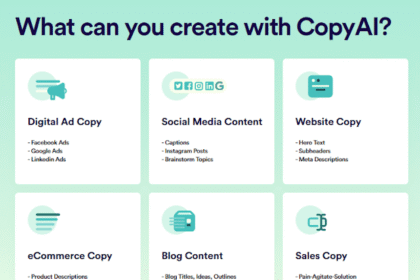1. Myth: Artificial Intelligence Can Think Like Humans
One of the most pervasive myths about artificial intelligence (AI) is that it can think and reason like a human being. This misconception stems partly from how AI is often depicted in popular media. However, the reality is far more complex. AI works on algorithms and data patterns rather than actual cognitive processes. While AI can perform tasks that mimic human intelligence – such as recognizing speech or playing chess – it does not understand or interpret these tasks like a human. AI operates through predefined rules and machine learning models, which allow it to analyze large datasets quickly but without genuine comprehension or emotional awareness.
Furthermore, AI lacks consciousness, self-awareness, and the ability to experience emotions. This absence of human-like thinking means that AI can excel in specific, well-defined tasks but cannot replicate the nuance and depth of human thought processes. Researchers are continuously working on improving AI’s cognitive capabilities, but as of now, AI remains a tool that performs based on set algorithms rather than an entity that can think autonomously like humans.
2. Myth: AI Will Replace All Human Jobs
Another common myth is that AI will inevitably lead to widespread job displacement across various industries. While it is true that AI and automation have the potential to change the job landscape, the narrative is more nuanced. Certain repetitive and mundane tasks are indeed at risk of being automated, leading to a significant transformation in the workforce. However, it’s essential to recognize that AI is also poised to create new job opportunities.
History demonstrates that technological advancements have frequently led to the emergence of new professions and the evolution of others. For instance, the rise of digital marketing created roles that didn’t exist a decade ago, such as social media managers and data analysts. AI is expected to augment human capabilities rather than completely replace them. In many cases, AI can handle mundane tasks, allowing employees to focus on more complex, strategic projects that require human insight.
Moreover, the integration of AI technologies necessitates a workforce skilled in collaboration with these systems. Upskilling and vocational training focused on AI-related skills can enhance employability. In short, while some jobs may be phased out, many new opportunities will emerge, emphasizing the importance of adaptability in the workforce.
3. Myth: AI is Infallible and Objective
Many people believe that AI is inherently objective and free of biases, assuming that computers do not possess the same prejudices as humans. However, this is far from the truth. AI systems are trained on large datasets that often reflect historical biases and societal inequalities. If the data used to train these systems contains biased information, the AI outputs may also be biased. This flaw can lead to decisions that are unfair or discriminatory, particularly in sensitive applications like hiring, law enforcement, or lending.
Additionally, the algorithms that govern AI systems can also introduce bias, either intentionally or inadvertently. Different design choices by developers and the ethical frameworks guiding their decisions play a critical role in shaping AI behavior. Bias detection and correction have become essential parts of AI development, but addressing these issues is an ongoing challenge in the field. Thus, it is crucial to approach AI technologies with a critical lens and to advocate for transparency, ethical standards, and diverse datasets to limit bias.
4. Myth: AI Understands Human Language Perfectly
Natural language processing (NLP) is one area where AI has made significant advancements, with applications ranging from virtual assistants to translation services. However, the myth that AI understands human language perfectly is misleading. While AI can process and analyze human language inputs to an extent, it often lacks the comprehension that humans have.
AI models, such as those powered by machine learning algorithms, rely on vast amounts of text data to understand language patterns. This training allows them to generate responses that appear coherent but do not stem from a true understanding of context, sarcasm, or idiomatic expressions. Misinterpretations can lead to responses that are inaccurate, irrelevant, or even offensive.
Furthermore, nuances such as tone, cultural references, and emotional context often remain lost on AI systems. They lack the ability to grasp underlying meanings or detect emotional sentiments effectively. While advancements in NLP are encouraging, it is premature to view AI as a perfect translator of human language.
5. Myth: AI is the Same as Machine Learning
AI and machine learning (ML) are often used interchangeably, but this is a simplification that can lead to misunderstandings. AI is the overarching field that encompasses all technologies that enable machines to perform tasks that would typically require human intelligence. This includes not only machine learning but also rule-based systems, natural language processing, and robotics.
Machine learning, on the other hand, is a subset of AI focused specifically on the development of algorithms that allow computers to learn from and make predictions based on data. In essence, while all machine learning is AI, not all AI is machine learning. Other forms of AI may utilize different approaches, such as symbolic reasoning or knowledge-based systems, which do not involve learning from data in the same way that machine learning does.
Understanding this distinction is crucial for anyone interested in AI, as it highlights the breadth of the field and the various methodologies that can be employed to create intelligent systems. Recognizing that AI extends beyond machine learning can also inform discussions on its applications, limitations, and potential evolving capabilities.




